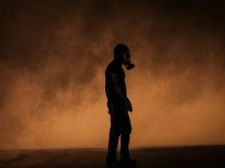Project Updates
Project Update: The Tear Gas Connection
On 23, Jul 2015 | In Project Updates | By Nicola Gauld
Tear Gas was a key theme of the Media for Social Change activities this year (part of the Birmingham Centre for Media & Cultural Research). After we hosted the Tear Gas Research Connection UK meeting last November, we organised in April 2015 a panel discussion on the military, policing, legal, commercial and medical aspects of tear gas, both in historic and more contemporary contexts.
The Tear Gas Connection is a research project initiated by Dr. Anna Feigenbaum (Bournemouth University) and John Horne (University of Birmingham) and the panel included Neil Corney of Omega Research Foundation and Ala’a Shehabi of Bahrain Watch.
First used in 1914, tear gas is also a legacy of WWI; it was first developed as a chemical weapon for military use, then misleadingly rebranded as a “non-lethal” weapon used to repress protests around the world. This allowed us to establish a great connection between the work Anna and John are doing on Tear Gas and our involvement as in the AHRC-funded Voices of War and Peace project.
I’m currently in discussion with Prof. Ian Grosvenor and Dr. Nicola Gauld of UoB’s World War One Engagement Centre to submit an application to their research fund to work with a community partner in Birmingham and in Beirut to map and document the stories of Armenian migrant communities in the UK and Lebanon. The Armenian genocide started in April 1915 under the Ottoman rule, and led to a diaspora of around 11 million Armenians scattered across all continents. It is in that sense another legacy of WWI. The project aims at understanding the communalities and differences between these two communities and learning about the influence of the ‘host’ country in shaping an Armenian identity, in its core constituents and developments. I am very interested in this project because it would give me the opportunity to explore immanent traces of past, other wars in the present, offering me new perspectives on the work I’ve been doing the last few years on media representations of conflict in the Arab world.
Dr Dima Saber
Birmingham City University
Picture by Ahmed Al-Fardan, Bahrain



